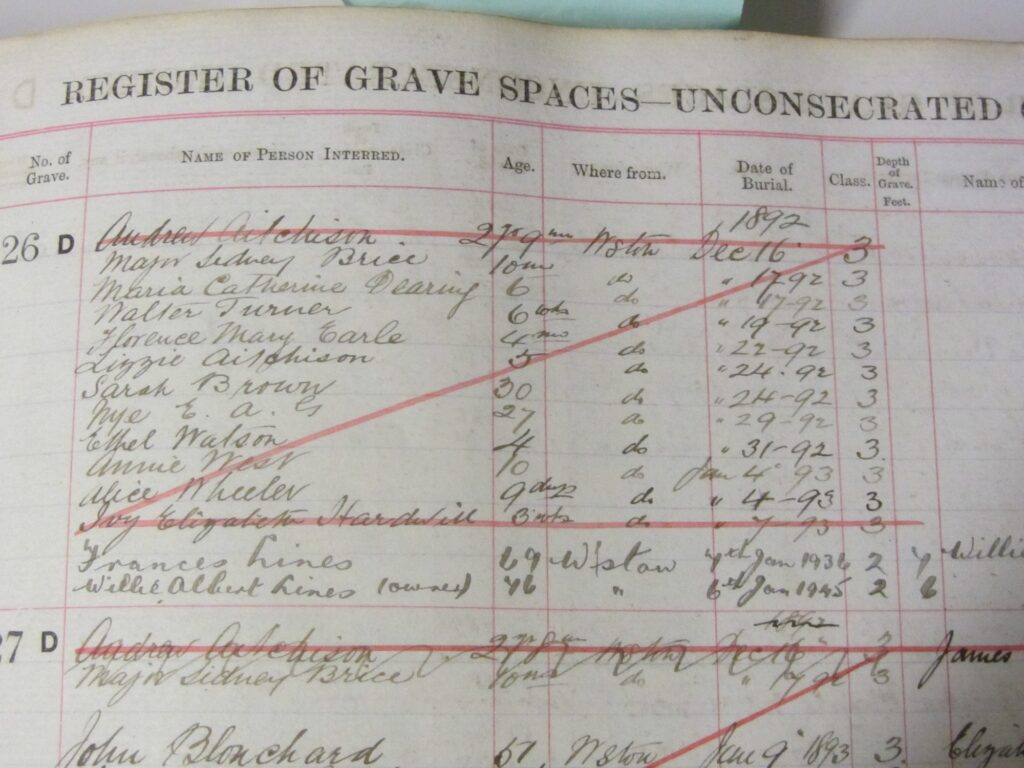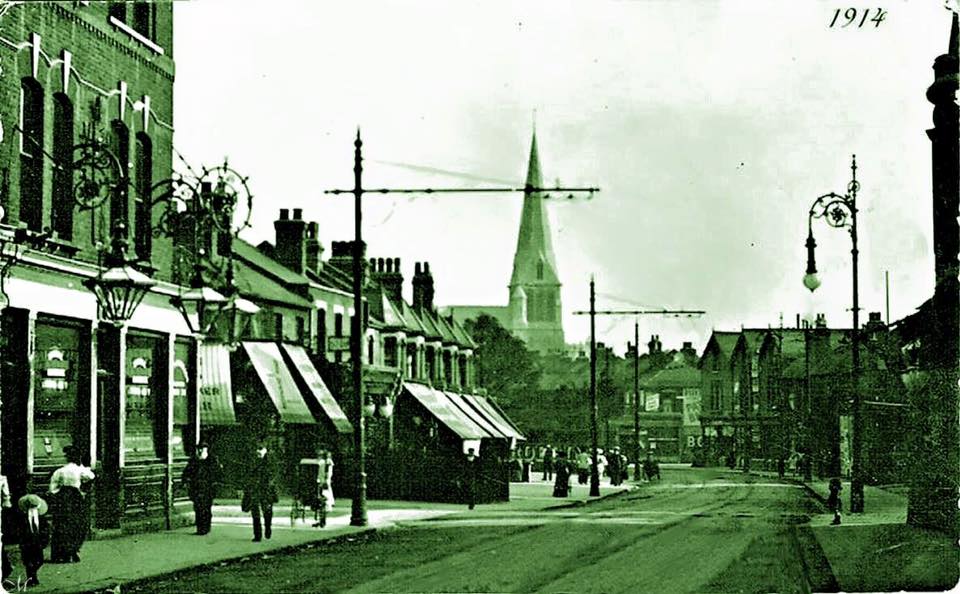Annie West only lived to be ten. Her unmarked grave, shared with eleven others including five babies, is in Queen’s Road Cemetery, Walthamstow; the plot was resold many years ago. In the final decades of the nineteenth century, when Annie lived and died, it was all too common for families to lose a child, sometimes several. In those days before antibiotics, not only TB but any winter cough could be a killer, and a “delicate” child was often “not long for this world”.

But Annie was fit and well, the eldest of six children of Richard West, a respectable working man with a steady job as a stoker at the local gas works and his wife Sarah. Then she ran out of her home on Boxing Day 1892. Her frozen body was found beside a ditch less than half a mile away the next day. And her inquest, held over two weeks in January 1893, attracted national publicity, local gossip, the attentions of the newly formed National Society for the Prevention of Cruelty to Children, a false confession of murder – and public vilification of Sarah West, who was blamed as being “morally if not legally” responsible for her daughter’s death.
The known facts are these. Annie left the house in a hurry on the evening of Boxing Day, without a coat, hat or warm shoes. Her mother claimed that she had believed Annie had only gone outside for some coal for the fire. But Annie spent the next few hours walking the local streets, telling her friend Ada Lebern, whom she met by chance, that she did not want to go home. Ada gave Annie an orange to try to cheer her up. It was found still in her pocket after she died. Annie talked about sleeping in the dog’s kennel at home, but after she and Ada parted company she set off in the opposite direction in the bitter weather, towards Low Hall Farm, and it was there, beside a ditch, that her frozen body was found the next day.
About three in the afternoon of 27th December a passer-by at Low Hall Farm saw a group of boys “looking at something in the ditch” – going to investigate, he discovered Annie’s body, kneeling face downwards in the ditch, with an orange in her apron pocket. A policeman was called and took the body to the mortuary at Queen’s Road, where it was examined by a local doctor, who noted that the corpse was so frozen he had difficulty in making his examination. The policeman was to say at the inquest that there was no sign of a struggle at the spot; the doctor was clear that there was no water in Annie’s lungs; he was sure she had frozen to death in the temperature of the previous night.
Annie’s funeral took place on 4th January – perhaps at St Saviour’s Church in Markhouse Road where she had been christened nine years before. The burial was in a shared grave where there were to be eleven other burials in all, including five babies. This was the common practise of the time, and the fact that the burials were in unconsecrated ground reflects simply that this was in the part of the cemetery that was opened to Nonconformist as well as Anglican burials. The register entry tells us, too, that the plot was resold some forty years later, in the 1930s. This, too, was routinely done with “common” graves.

Markhouse Road with St Saviour’s Church in 1914
All this was before the media circus got going. All inquests were fully reported in the local press, with the statements of witnesses and the coroner being printed verbatim. This one did the 1890s equivalent of going viral as the circumstances became known. At an early stage the Coroner stated that “some man had given himself up to the police, and alleged that he had caused the death of the child….. he had only been discharged from a lunatic asylum on the previous Sunday…a man who had given himself up for various offences”. However unfounded in fact, this was, however, a promising piece of fuel to feed the media frenzy. Only four years after the last of the so-called “Jack the Ripper” killings, whose coverage had sold many newspapers, a new murder did wonders for a paper’s circulation. Depressingly, at least one recent writer has suggested that this unfortunate man drowned Annie, despite the fact that she was not drowned and he was nowhere near at the time of her death.
And in the absence of a murderer, Sarah West was vilified. The standards of her day required a pregnant mother of six children under ten to be “grateful”, as one juror put it, that her husband “entrusted” money to her to feed the family, and him. No matter that Richard West habitually came home from work only to barricade himself in the quietest room to sleep until his next shift. He had worked through Christmas night, slept through Boxing Day, waking at five in the afternoon to discover the children had not had their dinner, which was spoiling in the oven. In the course of the inquest it emerged that Annie had run away from home on four previous occasions, and the police had brought her back. Nothing had been done to support the obviously struggling family. Neighbours had known all was not well; one claimed that Sarah was often drunk, and would quarrel with Annie, turning her out of the house. The Coroner claimed “Mrs West’s conduct is most reprehensible”, and after the verdict of death as a result of exposure had been returned, he proceeded to abuse her in Court.
The case had been reported nationally, and must have been the talk of Walthamstow as well as filling many column inches in the “Walthamstow and Leyton Guardian” for three consecutive weeks. It is hard to imagine how the West family dealt with their notoriety. They did indeed move house, but only about half a mile to Cambridge Road, a turning off Boundary Road, long demolished. The press coverage died down, leaving a flotsam of sentimental poetry and an outraged letter or two; if any report was made by the NSPCC inspector who had apparently attended the whole inquest then it has vanished, as there is nothing on file.
It seems, then, that for the West family life returned to some kind of “normal”. They had two more children after Annie’s death. In 1911 Sarah West listed that she had had a total of eight children, of whom five were alive. At the time of the 1911 census Richard and Sarah were living in Netley Road, with only one of their surviving children. Another, Amy, was living with her uncle Edmund in Leytonstone – evidently the West family was on sufficiently good terms for this arrangement.
Of Annie’s surviving brothers and sisters, we know that Edmund, who had shared her christening, joined the Essex Regiment during the First World War, and was killed in action on 4th January 1918, leaving a widow. The youngest sister, Alice, had been born in 1897, five years after Annie’s death. Alice apparently went through life unaware that Annie had ever lived. Given that some at least of her older brothers and sisters would certainly have remembered Annie, the West household must have been one of gaping silences, perhaps especially at Christmas.

1 ping